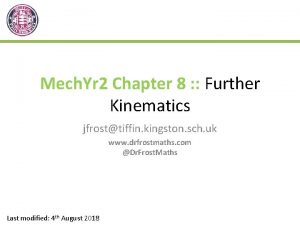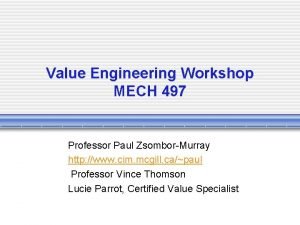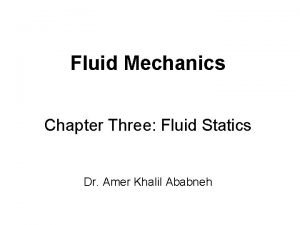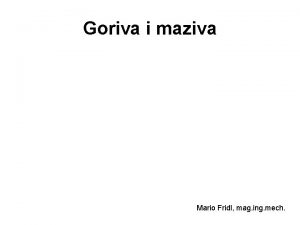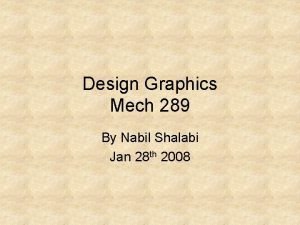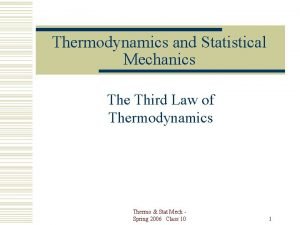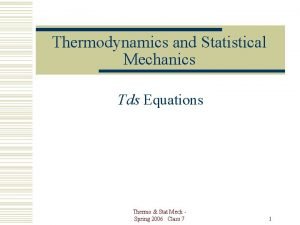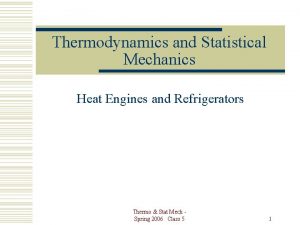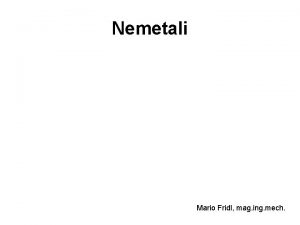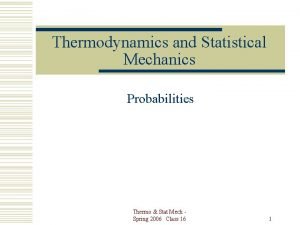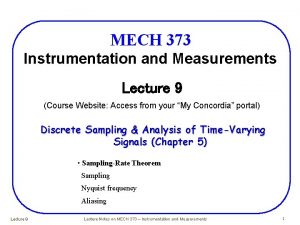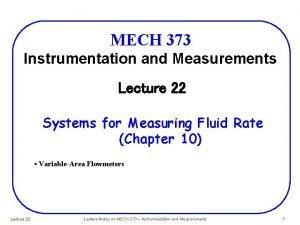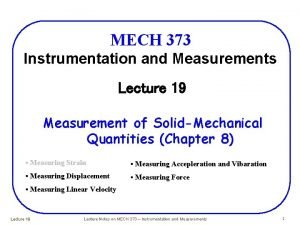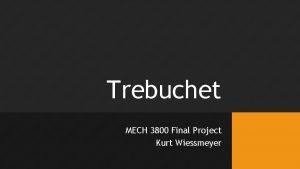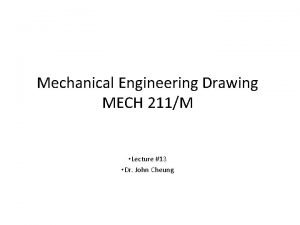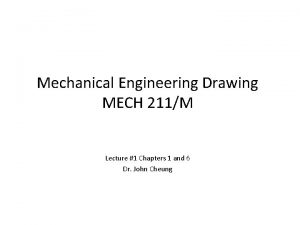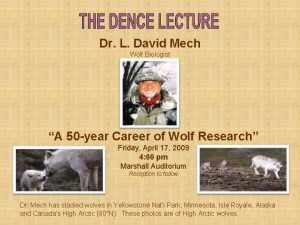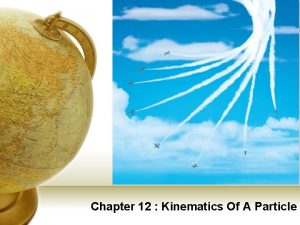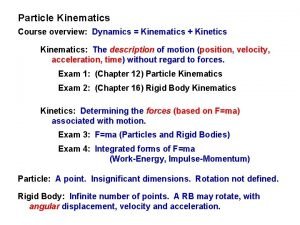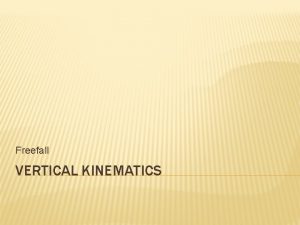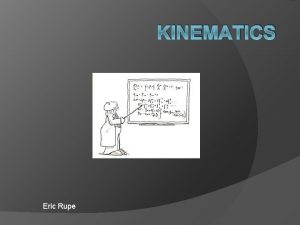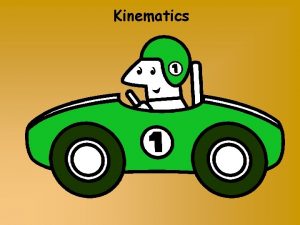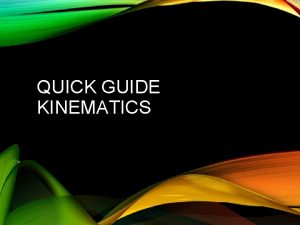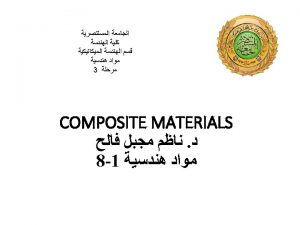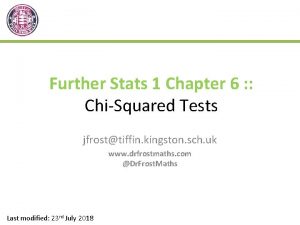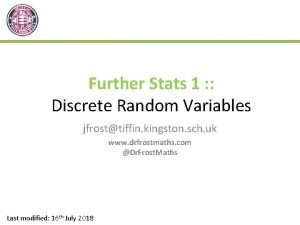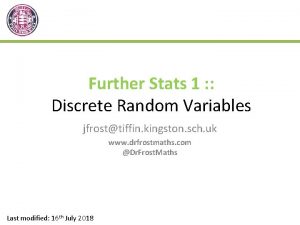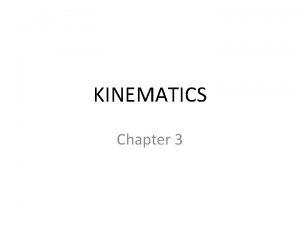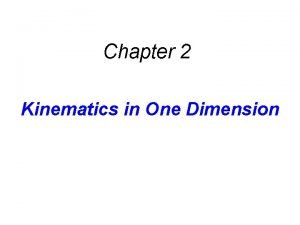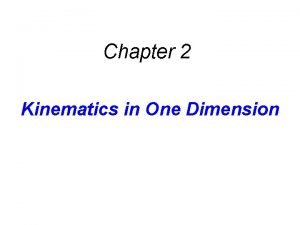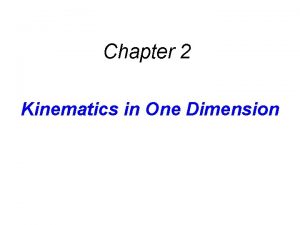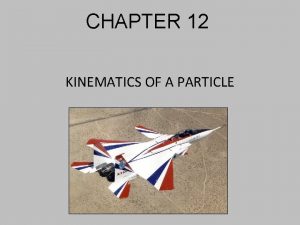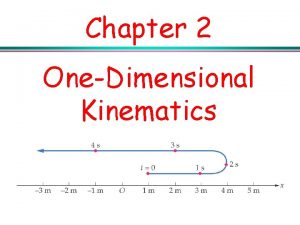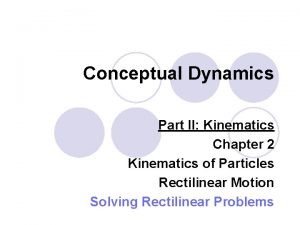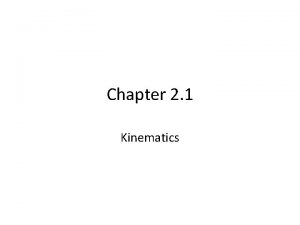Mech Yr 2 Chapter 8 Further Kinematics jfrosttiffin






















- Slides: 22

Mech. Yr 2 Chapter 8 : : Further Kinematics jfrost@tiffin. kingston. sch. uk www. drfrostmaths. com @Dr. Frost. Maths Last modified: 4 th August 2018

www. drfrostmaths. com Everything is completely free. Why not register? Register now to interactively practise questions on this topic, including past paper questions and extension questions (including MAT + UKMT). Teachers: you can create student accounts (or students can register themselves), to set work, monitor progress and even create worksheets. With questions by: Dashboard with points, trophies, notifications and student progress. Questions organised by topic, difficulty and past paper. Teaching videos with topic tests to check understanding.

Overview 1: : Vector equations for motion. 2: : Variable acceleration with vectors. 3: : Integration with vectors to find velocity/displacement Note for teachers: The first item was in the old M 1 with projectile motion in M 2. Variable acceleration was in M 2.

Vector motion After after 2 seconds? ? Fro Note: I don’t really remember as a formula as such though, but as ‘common sense’ using the reasoning above. Fro Note II: Further Mathematicians who have finished Vectors in Core Pure Yr 1 may see the similarities with vector equations of straight lines.

Example a ? b ?

? ? a b ? Remember that speed is the scalar for of velocity, so find magnitude of the vector. ? The velocity vector gives the direction of motion. Just draw it out to establish angles.

Further Example c a ? ? d b ? ?

Test Your Understanding Edexcel M 1(Old) May 2013(R) Q 6 ? ? ?

Exercise 8 A Pearson Stats/Mechanics Year 2 Pages 162 -164

Vector methods for projectiles Previously we considered the initial speed of the projectile and the angle of projection. But we could also use a velocity vector to represent the initial projection (vectors have both direction and magnitude) and subsequent motion. a ? b ? c ?

Test Your Understanding Edexcel M 2(Old) Jan 2012 Q 7 ? ? ?

Exercise 8 B Pearson Stats/Mechanics Year 2 Pages 166 -167

Variable Acceleration in One Dimension a ? b Remember with ‘reverse chain rule’, we divide by constant in front of variable. ? c Finding area under velocity-time graph. ? Can tidy up integral by factorising out common factor.

Test Your Understanding a ? b ?

Exercise 8 C Pearson Stats/Mechanics Year 2 Pages 168 -170

Differentiating Vectors ? a ? b c ? ?

Exercise 8 D Pearson Stats/Mechanics Year 2 Pages 171 -173

Integrating Vectors The constant of integration is a vector. ?

Further Example b a ? ?

Test Your Understanding Edexcel M 2(Old) Jan 2013 Q 4 ? ? ?

Exercise 8 E Pearson Stats/Mechanics Year 2 Pages 175 -176

You have reached the end of maths. * * At A Level.
 Dr frost further kinematics
Dr frost further kinematics Aplusphysics kinematics-horizontal kinematics
Aplusphysics kinematics-horizontal kinematics Paul zsombor-murray
Paul zsombor-murray Mehanika fluida ftn
Mehanika fluida ftn Minimum volume
Minimum volume Mag ing mech
Mag ing mech Mech 289
Mech 289 Stat mech
Stat mech Third tds equation
Third tds equation Stat mech
Stat mech Mag ing mech
Mag ing mech Thermodynamic probability ppt
Thermodynamic probability ppt Rhynophyta
Rhynophyta Mech robotix
Mech robotix Mech
Mech Mech
Mech Mech
Mech Trebuchet mech
Trebuchet mech Mech 211
Mech 211 Mech 211
Mech 211 Dr david mech
Dr david mech Kinematics of a particle
Kinematics of a particle Difference between further and furthermore
Difference between further and furthermore
